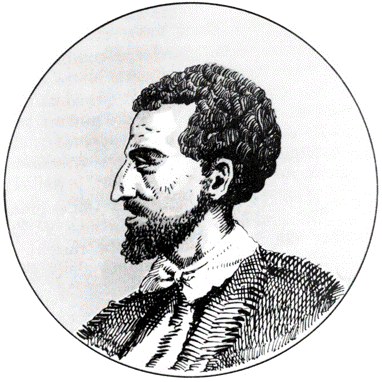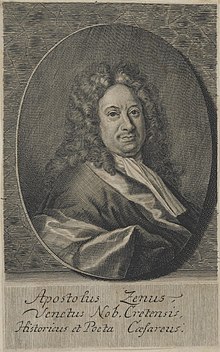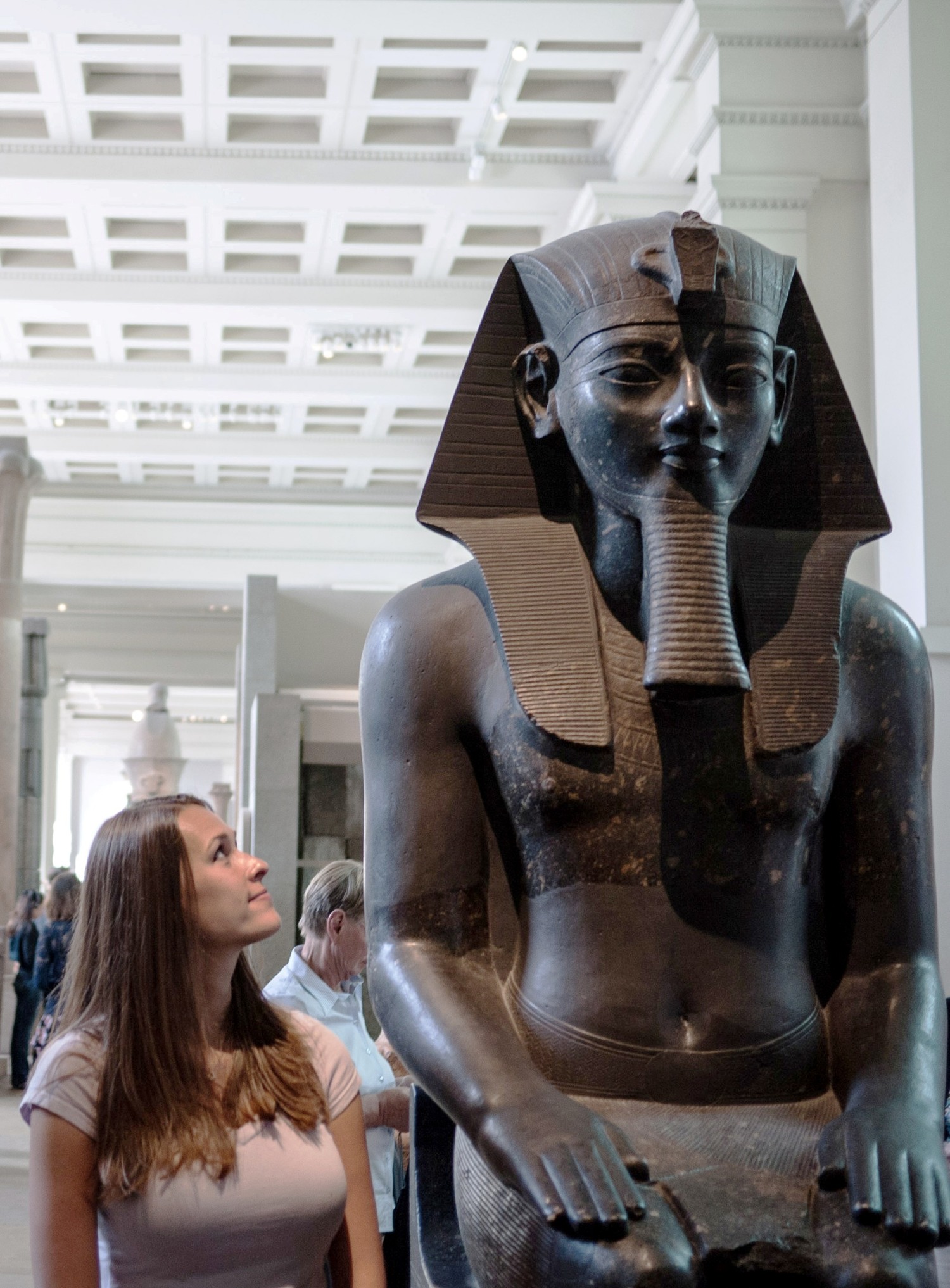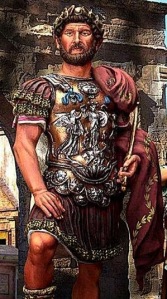This is interesting:
Figures
Figures
This article has a follower with the status of a permanent page, which will be regularly (or I hope so) enriched with new and pertinent information :
Figures continued…
- Claudio Tolomei (1492-1556) is « Claudius Ptolemy » (his family name is Ptolemaeus or Ptolomaeus in latin). He is a versatile erudite of his times, except that he did nothing regarding geography and astronomy.
- Peter von Benewitz « Apianus » (1495-1552) is the old latin author « Appianus ». Contrary to Ptolemy, it is the Renaissance author who is a geographer and an astronomer, while his antique counterpart is an historian.

- Polydore Vergil (1470-1555) is Virgilius

There is a « Giovanni del Virgilio » who is an author from the beginning of the 14th century, without precision about the dates. He was a friend of Dante. Polydore had a brother named Giovanni Matteo Virgilio who teached at the universities of Padua and Ferrara but of whom nothing more is said.
- Agostino Chigi (1466-1520) is « Saint-Augustine ».
Saint-Augustine… in cardinal attire
He was a incredibly wealthy banker who lived in Sienna, very involved in the church and close to the popes.
In Sienna there is the yearly horse race called the Pallio, not in Hippone (town of horses) in northern Africa. The cathedral in Sienna is called Saint-Agostino. In it, there is the funerary monument of Agostino Chigi
It is no wonder that the Roman church has since a lot to do with banking activities. The reforms of the council of Trent have concern for the question of banking : the Jubilees are abandoned and usury brought by the swiss Calvin is now accepted. It is known that the medieval church practiced the Jubilees (as in the Old Testament) until at least the 15th century.
Chigi was part of the League of Venice against France. It probably means the league against the Franks (of Charles V).
- Girolamo Savonarole (1452-1498) is « Saint-Jerome » (Fomenko said Erasmus, but it does not concur with the life of Erasmus who writes in greek).

He overruled the Medici in Florence. He is said to be a reformer. He welcomed Charles VIII king of France in Florence (in fact Charles V) and started a religious dictatorship in Florence (1494-1498). Jerome wrote the latin « translation » of the Bible. The french translation in 1530 is based upon the Vulgate of Jerome. He predicted the coming of « a new Cyrus » that woud cross Italy to bring back the order. The prophecy is said to have been fulfilled with the coming of Charles VIII of « France » (Carolus magnus of the Franks). He called the roman curia a « proud and lying whore », which shows how he remained « roman catholic » all the way. He is in fact an enemy of the jewish Temple in Rome.
Savonarole was against the use of indulgences and the sackcloth in the church. This is similar to statements made about other reformers like Loyola or Luther.
- Tommaso d’Aquino (1584-1651) is the name of a bishop of Mottola from 1648 to 1651. This is not surprinsig as his master Aristotle lived probably as Gennade Scholarius in the 16th century. His teachings influences René Descartes whos lives in the same times. The pope of his beginnings was Innocent X. The pope of the beginnings of the 13th century Thomas was Innocent IV.
- Hector Boèce (1465-1536) is the old « Boethius ». Both were called Boethius or Boèce, and both were scottish. He is one of the first disciples of Aristotle and is cited by Thomas de Aquino.

- Bartolomeo di Sebastiano Neroni (1505-1571), artist and architect : probably the architect of the antique « amphitheater of Nero », that was destroyed in remote times. There is a second amphitheatre like the Coliseum in some 17th century maps.
- Traiano Caracciolo is the template for the emperor Trajan. He was the duke of Melfi and good friend of the pope Clement VII (1478-1534).
- Tito Livio Burratini (1617-1681) is Titus Livius

He is essentially a mathematician and engineer. It is said he was involved in the history of Egypt where he lived a part of his life. It is not said he ever was a historian. His time of life concurs with a knowledge of the 17th century wars of religion, whose which the Roman jewish and christian insurrections are a reflection.
- Sallustio Bandini (1677-1760) : churchman and from Sienna, which are always good markers for an original of the « old » latin figures. Here Sallustius

- Apostolo Zeno (1668-1750) is the greek Zeno. He is a venitian author for the theatre and a philosopher. Possibly we should search in Venice for the original of the greek figures, while the latin figures are italian, from Tuscany mostlty

- Johann Christoph Jordan (died 1748) is the antique Jordanes.
He wrote in latin and published in 1745 De Originibus Slavicis. Jordanes published in the 6th century « History of the Goths ».
It is said by Fomenko that the german historians in Russia made a new history up. To his detriment, Else Löser said August Schlözer was the one who fashioned the word « Slav » in Saint-Petersburg. Possibly it was in fact Jordan who lived before Schlözer (1735-1809). Or it is the opposite : the late Jordan (of whom very little is known) is made upon the authentic Jordanes (15th century).
It shall be said that many popular songs in Poland are sung in german in the 19th century. Yiddish is a germanic language and not at all a slavic language. So Maybe Mrs Löser was true to say that all « slavic » languages were made up.
Ancient scientists and religious authors are basically the very same Renaissance characters whose biographies have been made up lately. But the books would then be authentic. This would be the case for Ptolemy or Augustine. The books have only been parted in two halves : one for the Renaissance author, one who would be attributed to the old double.
This is probably not so for an ancient historian or a roman emperor, for obvious reasons.
The roman emperors cannot be the double of the medieval « Holy roman emperors » (from 1520 and later) because the chronology which is needed is much longer, and a simple copy of the two historical periods would be too obvious. So the roman emperors carry the names of Renaissance artists, like Neroni, or scientists. Probably the emperor Claudius is again Claudio Tolomei, whose name is said to signify « crippled » like the emperor Claudius was said to be.
Many authors have now plainly displayed – but not rightly concluded – that the biographies of many ancient roman emperors have been built upon the life of Jesus. They concluded erroneously the opposite : that Jesus was built upon Julius Caesar (Francesco Carrota), built upon the three flavian emperors Vespasian, Titus and Domitian (Joseph Atwill). But the « Lives of 12 Caesars » by Suetonius have the same elements of Jesus in them.
For an historian like Titus Livius it has been pointed that he lived in the good times to write about the Wars of religions. There are two possibilities then. Either he wrote a true history but the names of characters have been edited later to make it « ‘ancient roman ». Or it had been entirely written based upon the Wars of religions with the purpose to create an ancient history. The habit to use a Renaissance character to name the « ancient » author was kept.
I personnaly support the second hypothesis, because this process goes on very lately. The team Chronology 2.0 displayed the absolute fact that the period 27 BC-325 AD is a phantom reflexion of the period 1527-1870. Both end with a council (Nicaea the first evern, and the last at the times of Mommsen and Fustel de Coulanges, Vatican I). Ancien roman emperors of later times have been shown by Fomenko to be doubles of the « first » roman empire (Diocletian = Pompeo, Constantine = Augustus, etc.). What comes next ? The barbaric invasions by Odoacer and Theodoric, the « Ostrogoths » and « Vandals ». What do we see in 1870 ? France at war with Prussia, precisely the place named « Prusse » or « Vandalie » in a 1660 french map. The prussian leader is « Otto » von Bismarck with his emperor Willhelm-Friedrich, king of Prussia, and first to carry the title of « german emperor », long after the end of the « roman empire » in 1806.






